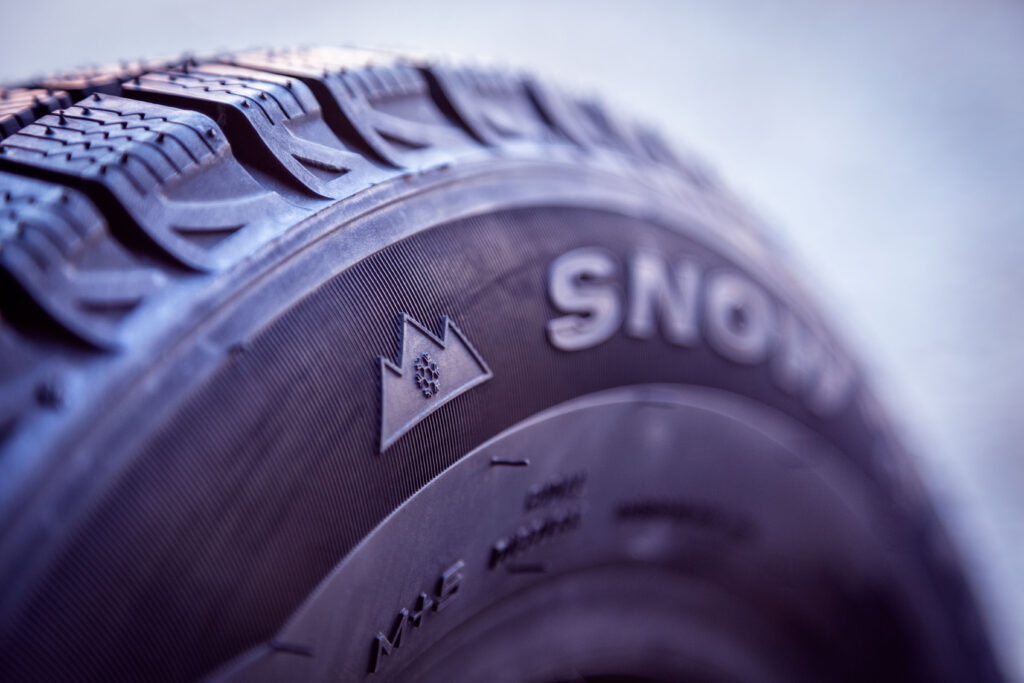The transition to winter can be both tedious and exciting. It is important to cover all the bases to make sure you’re not caught off guard once the snow blankets the ground. In addition to other winterizing precautions, like bundling up in a coat and scarf, consider putting winter tires on your car. Doing so can protect you and your vehicle in the upcoming snowy season.

What Are Winter Tires?
Have you ever looked at a tire closely? They are not just lumps of rubber wrapped around circular rims. Tire engineering improves every year to help tires perform better on the road, keeping the vehicle on the pavement while still moving forward.
It can be easy to assume that all tires are created equal, and that once they’re on and if they don’t experience damage, they can last as long as the treads endure. However, that is not the case. There are several major types of tires, and the performance of each is based on road conditions.
Summer or All-Season Tires
Summer or all-season tires perform better when roads are dry. Their treads are shallow, and their pattern is designed specifically to help water quickly funnel water away from where the tire meets the road. While this is helpful in climates that occasionally experience rain, it is not effective in places where snow covers the asphalt for any notable period of time, since snow and ice compacts inside the shallow treads.

Winter Tires
The goal behind winter tires’ design is to expand the range of conditions in which they can maintain a grip on the road, retaining traction in conditions summer tires cannot. To this end, their composition is slightly different, incorporating special rubber compounds for durability in low temperatures. Their tread patterns are also designed to discourage snow compacting inside so tires are less likely to slip.
Winter tires have much deeper treads, making them more ideal for winter conditions. However, there doesn’t need to be snow on the ground for winter tires to grip the road better. As the name indicates, these tires are optimized for cold weather with relatively light snowfall, and the treads remain soft even when temperatures drop. This pliability allows them to better grip the road.
The terms ‘winter tires’ and ‘snow tires’ are often used interchangeably, though manufacturers are at odds whether snow tires have deeper treads or the term is merely an outdated one. You can distinguish tires suited for the cold from all-season tires by the letters ‘m’ and ‘s’ included on the labeling (MS, M&S, M/S, etc.). The standard graphic—a three-peaked mountain with a snowflake inside—included on the tires’ sidewalls is also indicative.
Studded Tires
Studded tires are winter tires with a twist. In addition to deep treads and a composition ideal for the cold, these tires also have metal studs mounted to them. This allows the tire to cut through heavy snow and ice conditions with maximum traction. Drivers in such conditions may choose to use them instead of chains since it minimizes the possibility of a chain breaking and flying off.
While they have their uses, studded tires are not meant for regular road conditions. They are damaging to the road and make for an uncomfortable ride. They are also not cheap, so they really only should be considered by those vehicles that frequently pass through heavy snow.

Is It Worth It to Get Winter Tires?
There are many who wonder if winter tires are really worth it or just another marketing scam. However, in a state like Utah where winter weather is a guarantee, winter tires are a must. Their difference is not merely a matter of branding but of composition and design, and failing to put them on when the weather turns chill is an unnecessary gamble.
Winterizing your tires is a matter of both safety and convenience, making sure you don’t slip off the road or get stuck. While the specialized tires are initially more expensive, using them in the winter may be less so in the long run since they can prevent costly accidents. No amount of money can replace loss of life.
Can You Use Winter Tires Year-Round?
If winter tires are so great, why not always have them on? The answer usually comes down to money. Winter tires are generally more expensive than regular tires and wear more quickly on dry roads, especially at higher speeds. For a more cost-effective performance, a good practice is to winterize your tires every year while using regular tires during the warmer months. Your winter tires can last up to three or four winters with this pattern.




Leave a Reply